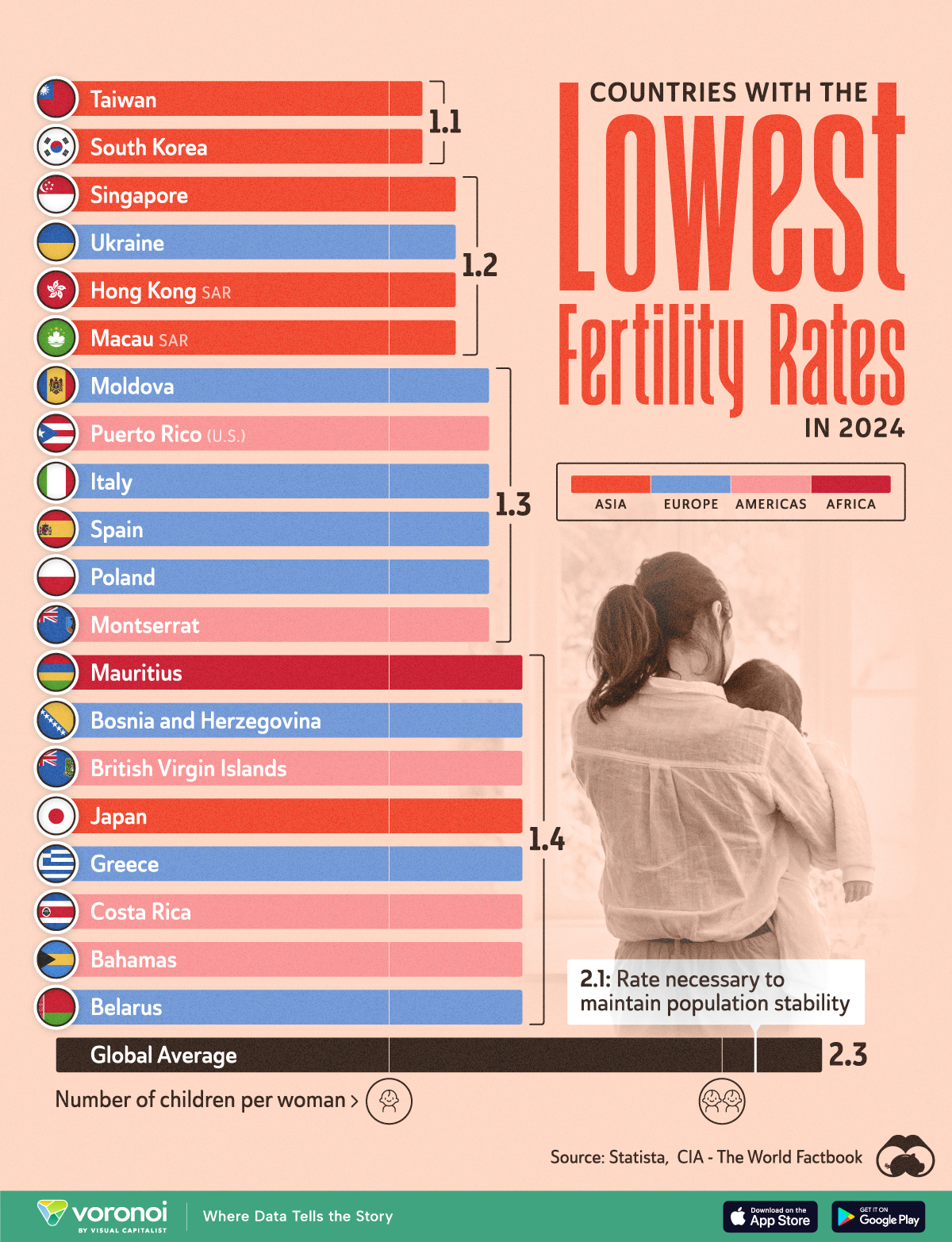Countries with the lowest fertility rates in 2024 face a unique challenge. A significant drop in birth rates can lead to a shrinking population, creating concerns about the future of these nations. While some countries struggle to maintain population growth, others have introduced policies to help encourage families to have more children.
What Does “Fertility Rate” Mean?
The fertility rate is a measure of how many children, on average, a woman in a particular country will have during her lifetime. For a country’s population to stay stable, the fertility rate needs to be about 2.1 children per woman. This is called the “replacement rate,” because it replaces both parents and accounts for any infant deaths.
However, many countries are now far below this replacement level, which could lead to a decrease in their overall population over time.
Countries with the Lowest Fertility Rates

Image from Statista, CIA – The World Factbook
In 2024, Taiwan holds the title for the world’s lowest fertility rate at just 1.11 children per woman. This means fewer babies are being born, and the population is likely to decrease if the trend continues.
South Korea is another country with a very low fertility rate. Like Taiwan, its rate hovers around 1.1 children per woman. This is a worrying trend for countries that depend on younger generations to support their economies.
Europe is also home to many countries with the lowest fertility rates. Italy and Spain both have fertility rates below 1.3 children per woman. These low rates mean fewer young people entering the workforce, which could eventually lead to economic struggles as more people retire.
Why Does This Matter?
Countries with the lowest fertility rates face several challenges. Fewer children being born means fewer workers in the future. This can make it harder to support an ageing population, with fewer people available to care for the elderly and keep the economy running smoothly.
For example, Europe is expected to experience a population decline of 7% between 2022 and 2050. This shrinking workforce could increase the burden on younger generations, who will have to support a larger number of retirees. Other regions, like parts of Asia and North America, may continue to see population growth for a while, but they too will eventually face similar challenges.
How Are Countries Responding?
Countries with the lowest fertility rates are already taking steps to address the issue. In South Korea, for example, the government has started allowing families to hire foreign nannies, making it easier for parents to balance work and family life. This is just one way the country is trying to encourage more people to have children.

Image from iStock
In Japan, the government is taking even bigger steps, spending billions of dollars every year to support families and boost the birth rate. Japan hopes that by making it easier for parents to raise children, more people will decide to start families.
The Future of Low Fertility Countries
As we move further into the 21st century, it’s clear that countries with the lowest fertility rates will need to keep adapting. Encouraging higher birth rates is not easy, and it will take time to see if current efforts pay off. But without some action, these nations could face shrinking populations, struggling economies, and an unbalanced workforce in the future.
By focusing on policies that support families, these countries can begin to tackle the challenges ahead and create a more stable future for generations to come.
ALSO READ:
Fertility Screening: Why You Should Consider It in Your 20s
How To Increase Fertility For Millennials: All You Need To Know
The Decline of Global Fertility Rate: A World in Transition